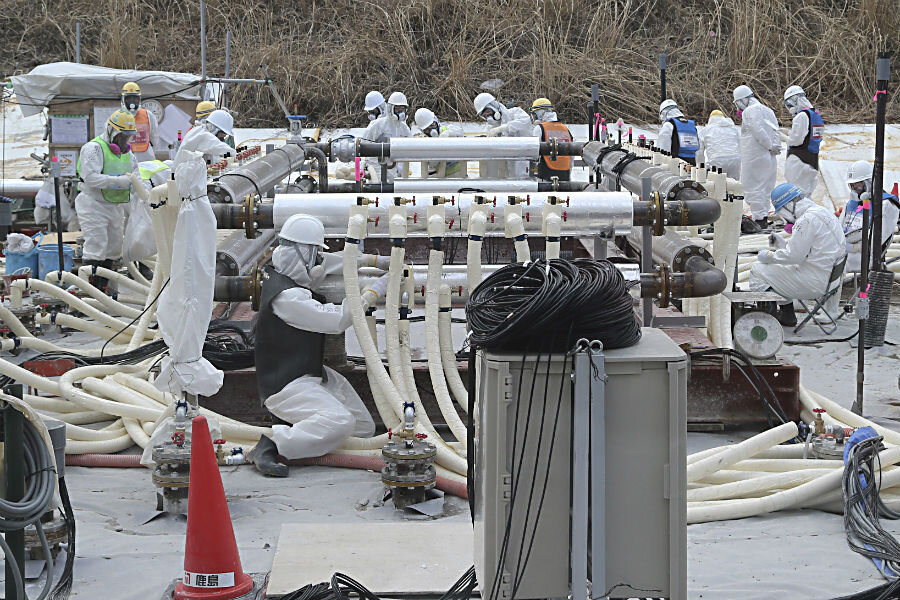Borrowing from 'Frozen,' Japan plans to seal Fukushima leak in wall of ice
Loading...
| Tokyo
Japanese regulators on Wednesday approved the use of a giant refrigeration system to create an unprecedented underground frozen barrier around buildings at the wrecked Fukushima nuclear plant in an attempt to contain leaking radioactive water.
The Nuclear Regulation Authority said the structure, which was completed last month, can now be activated.
The plant's operator, Tokyo Electric Power Co., said it plans to turn on the ice wall on Thursday, starting with the portion near the sea to minimize the risk of contaminated water escaping into the Pacific Ocean. The system will be started up in phases to allow close monitoring and adjustment.
Nearly 800,000 tons of radioactive water that is already stored in 1,000 industrial tanks at the plant has been hampering the decontamination and decommissioning of the nuclear facility, which was damaged by a massive earthquake and tsunami in 2011.
The success of the ice wall is believed to be key to resolving the plant's water woes.
The project, proposed by construction giant Kajima Corp., is more than a year behind schedule because of technical uncertainties. Some experts are still skeptical of the technology and question whether it's worth the huge cost.
The 35 billion yen ($312 million) government-funded project consists of refrigeration pipes dug 30 meters (100 feet) underground that are designed to freeze the soil around them. They are supposed to form a 1.5-kilometer (0.9-mile) wall around the reactor and turbine buildings to contain radioactive water and keep out groundwater.
At a meeting Wednesday of the nuclear agency, Chairman Shunichi Tanaka cautioned against high expectations because the success of the project depends in part on nature. "It would be best to think that natural phenomena don't work the way you would expect," he later told reporters.
Similar methods have been used to block water from parts of tunnels and subways, but a structure large enough to surround four buildings and related facilities is untested. A smaller wall was used to isolate radioactive waste at an U.S. Department of Energy laboratory in Tennessee but only for six years. The decommissioning of the Fukushima plant is expected to take decades.
Three damaged reactors at the plant must be continually cooled with water to keep their melted cores from overheating. The water, which becomes radioactive, leaks out through cracks and other damaged areas into the reactor basements, where it mixes with groundwater, increasing the volume of contaminated water.
Many experts including Tanaka say a "controlled release" of treated water is the only solution to the water woes, but concerns about ocean health make it a contentious subject.
A test of part of the ice wall successfully froze the ground around it, and officials hope the entire wall can be formed within several months, according to Shinichi Nakakuki, a spokesman for the utility, TEPCO.
TEPCO officials say they hope the ice wall will stop most of the flow of groundwater into the area and allow the turbine basements to be dried by 2020, confining the contamination to the three melted reactors.
Asked at the meeting if the ice wall is worth the cost, TEPCO accident response official Toshihiro Imai replied, "Its effect is still unknown, because the expected outcome is based on simulations."







